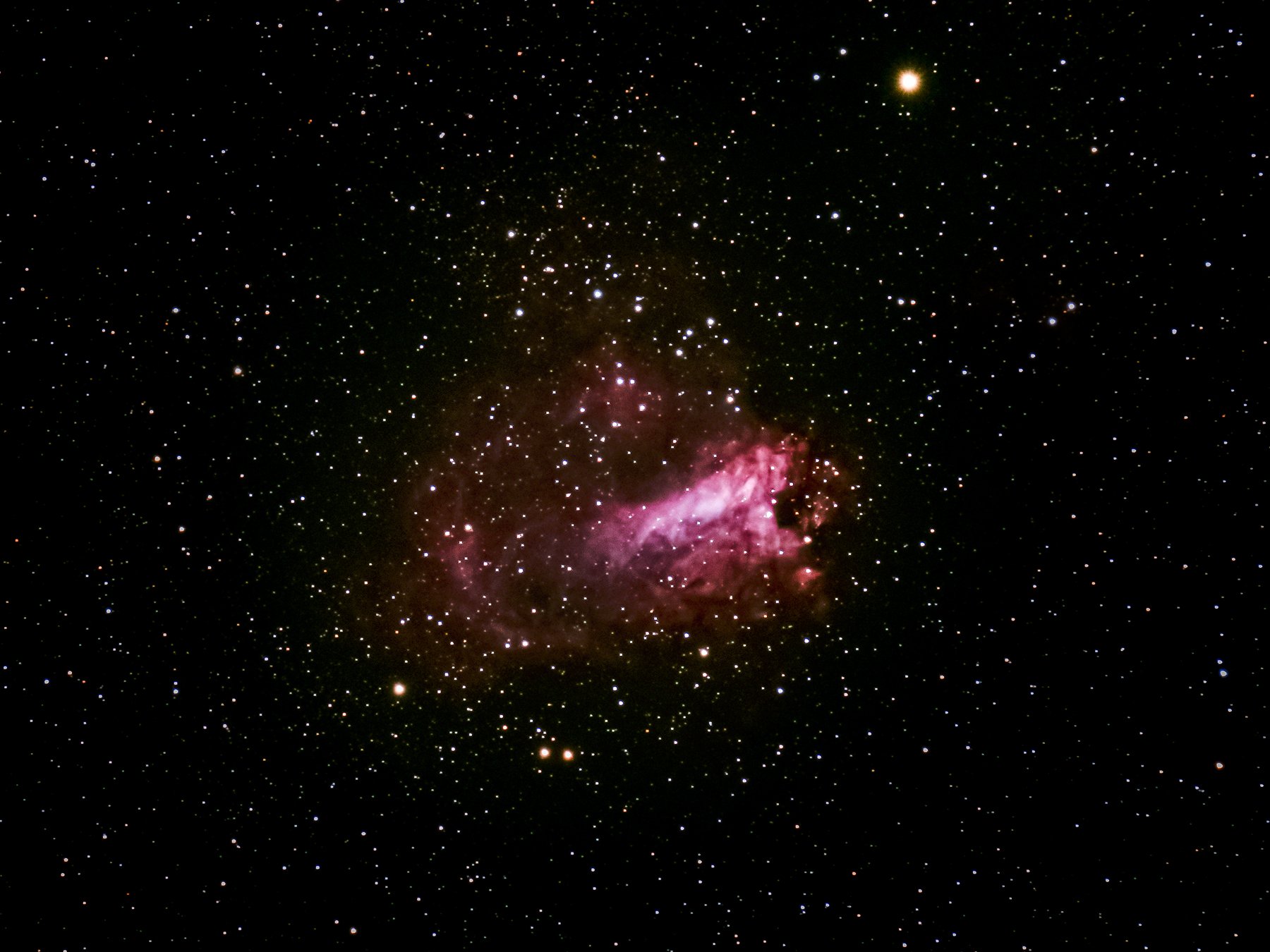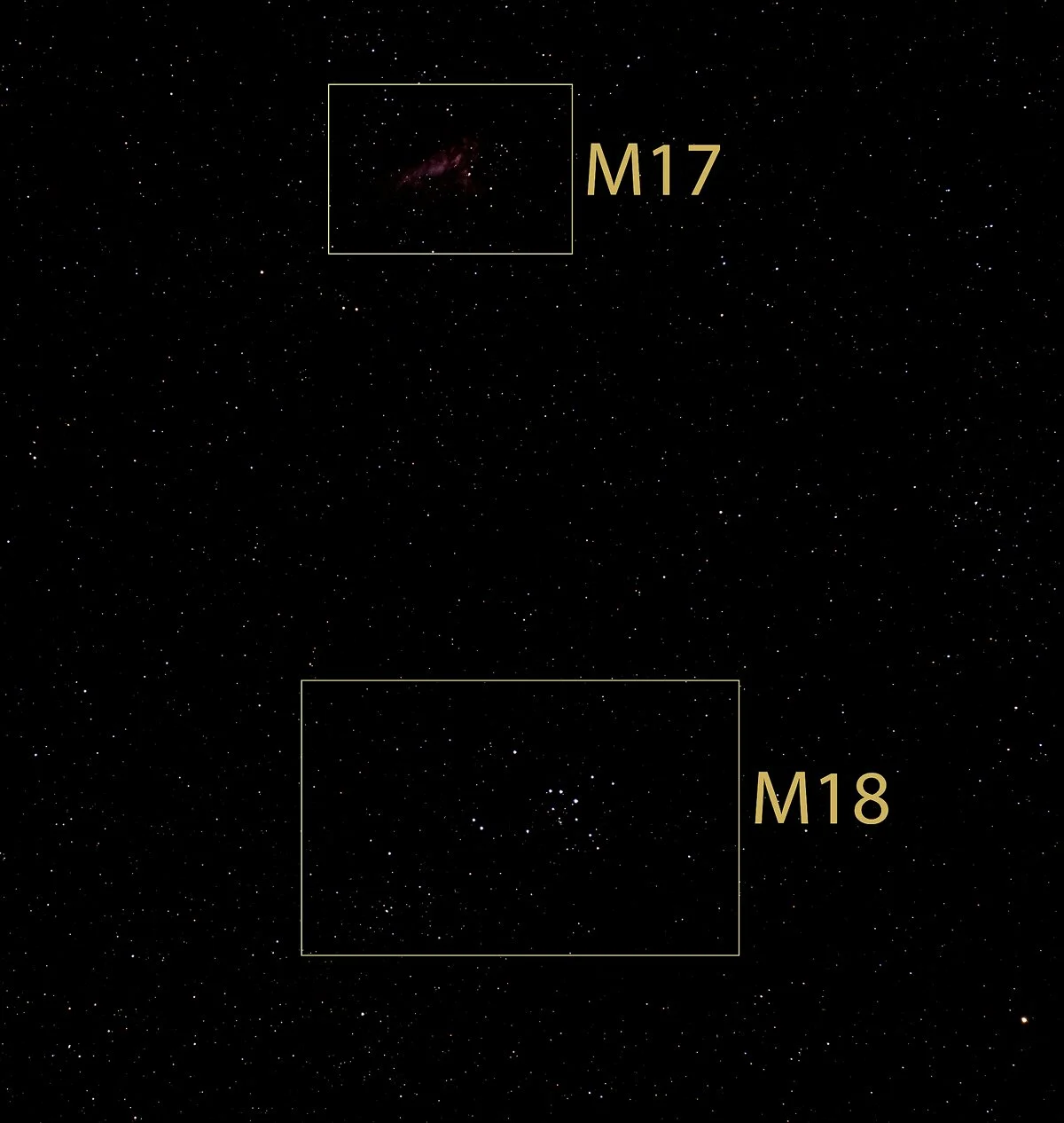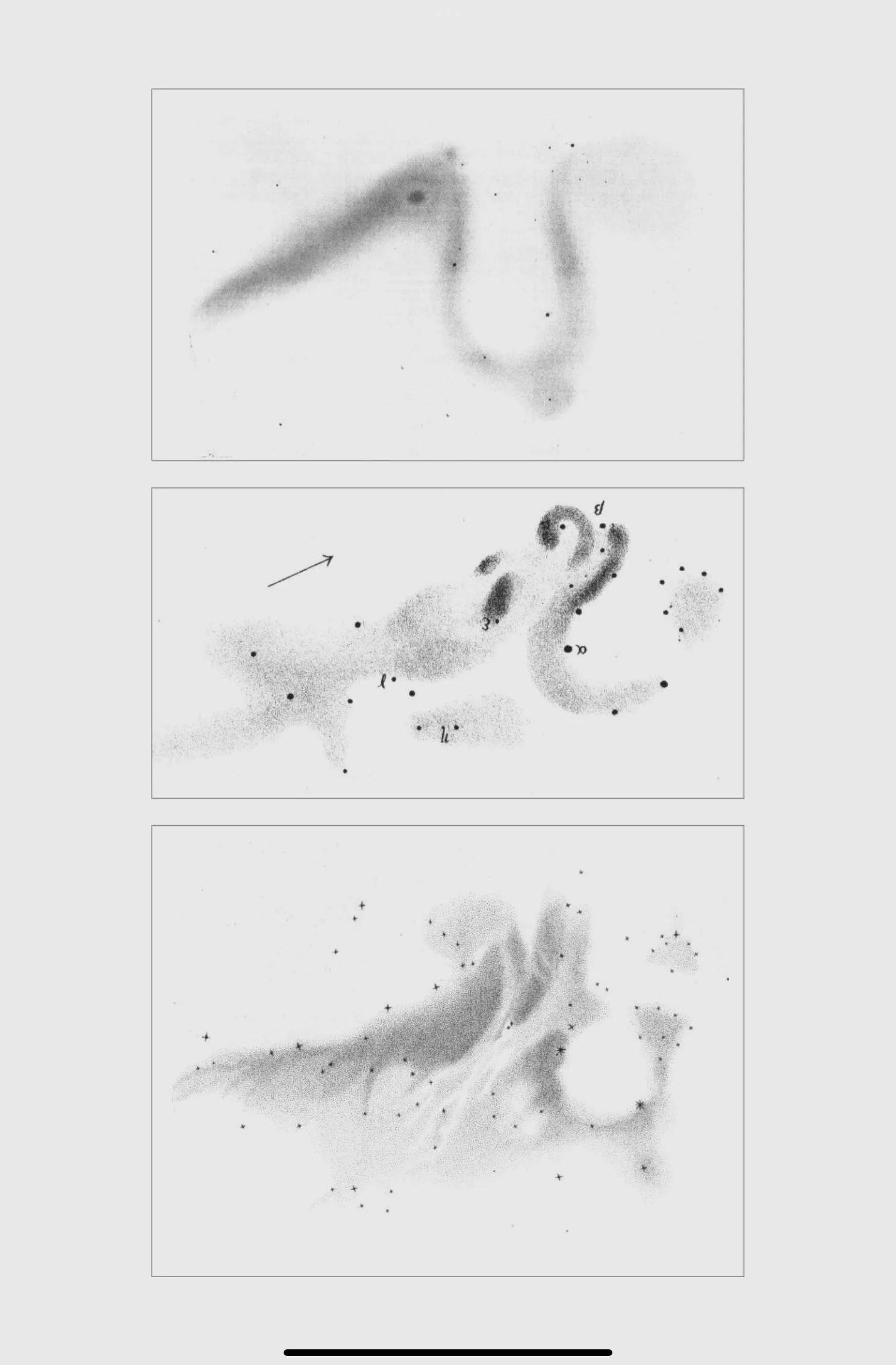M17 - Omega Nebula
Type: Galactic Nebula
Discoverer: de Chéseaux, 1746
Size: 70 ly
Distance: 5910 ly
Constellation: Sagittarius
My Notes: On July 26, 2022, I captured M17 at Merritt Reservoir near Valentine, Nebraska. This nebula can be seen in the same field of view as M18 with my 600mm (918eq) lens. It’s a nice nebula. It has several names including Omega, Swan, Checkmark, Lobster, and Horseshoe. I’m guessing the Horshoe and Omega are the same interpretation since the greek symbol for Omega is Ω (see historical drawings below). It took me a while to figure out where the Swan was, but once I flipped the image upside down it became obvious (see below).
(The following is the same for M8, M17, M18, M20, & M21) This was the first time using my iOptron CEM26 goto mount and my Fujinon 150-600mm lens. After struggling to capture the first 17 images of this collection using an iOptron Skyguider Pro, I picked up the CEM26. I was waiting hours trying to adjust the field of view using the Skyguider. While I made it work, it wasn’t really designed for deep-sky objects. As such, I could only get about one object each night because it took so long to find it, get it in view, and focus on it. Using this CEM26 let me capture five objects in the same amount of time. It is a real improvement to the practice and made for a much more enjoyable night, though I did miss the hunt that usually comes from trying to locate the objects myself, which I understand makes up a lot of the fun for people with Dobsonian telescopes. Regarding the lens, it also made a huge difference. The internal zoom and focus meant that the lens did not drift as gravity affected it. Focusing was much easier, and it stayed focused longer as the temperatures shifted.
Messier Notes: (June 3rd, 1764) ‘A train of light without stars… in the shape of a spindle, a little like that in andromeda’s belt (m31) but the light very faint. In a good sky, seen very well in a 3.5 foot telescope'
de Chéseaux: ‘A nebula which has never been discovered: it has a shape quite different from the others: it has the perfect form of a ray or the tail of a comet… Its sides are exactly parallel and quite well terminated. The center is whiter than the edges’
Chambers: ‘Like a swan, floating on water.’
19 Frame Stack - mean - 60 sec at f/10 600mm (918eq) ISO 6400 Fujifilm X-T4 XF150-600F5.6-8
The location of the Swan in the Omega nebula compared to a drawing by George Chambers in 1889
M18 relative to M17
Historical Drawings clearly depicting the Ω or horseshoe symbol. 1. John Herschel (pre 1833), 2. Lord Rosse (1854), 3. William Lassell (1862)




